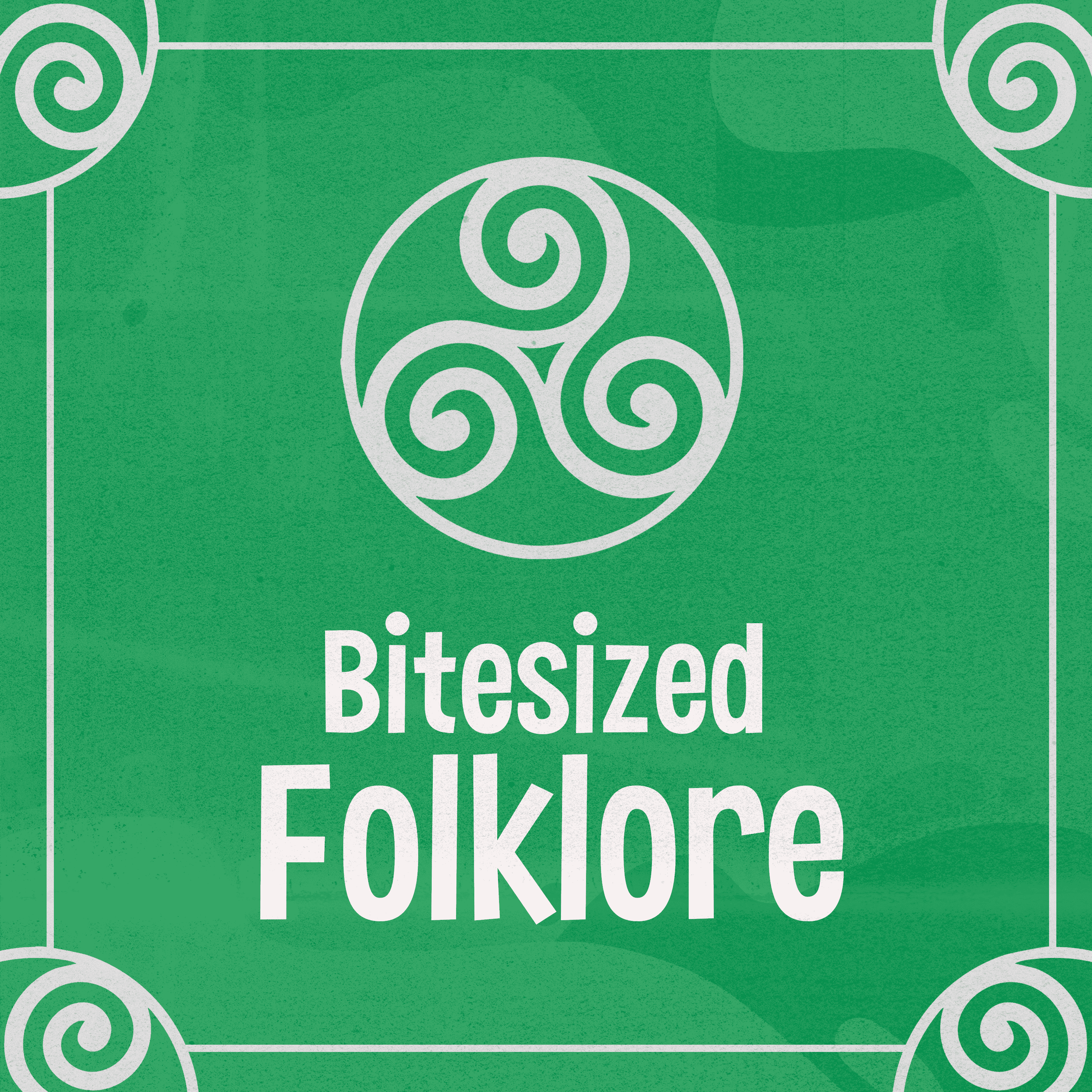Episode 30
From Myth to Miracle: The Story of Saint Brigid
If you'd like longer episodes like this, you can subscribe to the podcast to get premium content at the end of episodes and bonus episodes.
Today, we're diving deep into the flickering legend of Brigid, the ultimate multi-tasker of Irish lore—she's a saint, a goddess, a healer, and even a blacksmith! Seriously, this woman is so legendary that she blurs the lines between myth and history, making her one of those figures you just can’t ignore. Born in the fifth century, Brigid's story is lit with miracles like overflowing barrels and turning bathwater into beer—because let’s be real, who wouldn’t want that kind of magic in their life? Plus, we explore how she became a bridge between the old pagan ways and the new Christian faith, showing us that sometimes, old traditions can hang out with the new kids on the block. So grab a comfy seat by the fire, and let’s get ready to unravel the tales of this fierce and nurturing figure who still inspires us today.
Takeaways:
- Brigid, a powerful figure in Irish folklore, blends both goddess and saint roles seamlessly.
- Her miracles often involve everyday acts of kindness, making her relatable to the common folk.
- The sacred and the mundane coalesce in Brigid's story, bridging ancient beliefs with new faith.
- February 1st, a day honoring Brigid, is now a public holiday in Ireland, celebrating women's influence.
- Brigid's legacy is about more than miracles; it's a reminder of care, protection, and community.
- Her cross symbolizes a beautiful mix of Christian and pagan traditions, representing continuity in belief.
Transcript
Welcome to Bite Sized Folklore, where myths and legends flicker to life in 10 minutes or less.
Speaker A:I'm your host, Jodie.
Speaker A:And today we journey to Ireland, where a woman of flame and miracle walked the earth, or perhaps never quite left it.
Speaker A:This is the story of Brigid, saint goddess, healer, blacksmith, brewer and bearer of light.
Speaker A:Her story is one of blurred lines, where the sacred and the pagan, the historical and the mythical, all burn together and in one eternal flame.
Speaker A:Let's begin in the fifth stage century, a time when Ireland was still shifting from the old gods to the new faith.
Speaker A:The Roman Empire had fallen, Christianity was spreading and the old Celtic beliefs still clung to the landscape.
Speaker A:In rivers, in stone, in fire.
Speaker A:Bridget was born.
Speaker A:According to tradition, at sunrise, as the light broke across the land, her mother, a slave, gave birth on the threshold of a house between indoors and outdoors.
Speaker A:This detail is not a coincidence.
Speaker A:Brigid, even in birth, existed between worlds, liminal, symbolic, otherworldly.
Speaker A:Her father was a noble chieftain, her status, well, complicated.
Speaker A:She was not quite noble, not quite servant.
Speaker A:But young Brigid was different.
Speaker A:The stories say she could not bear to see suffering.
Speaker A:She gave away food, clothing, even her father's belongings to anyone in need.
Speaker A:When scolded, miracles followed.
Speaker A:Empty barrels overflowed, butter churns refilled.
Speaker A:One legend even tells of her giving away all of her mother's store of milk, only for the pails to magically fill again moments later.
Speaker A:Beliefs aren't just miracles, their motifs echoes because there was another Brigid, far older.
Speaker A:Before St Brigid, there was Brigid the Goddess, a central figure in Celtic mythology, a triple goddess embodying the realms of healing, poetry and smithcraft.
Speaker A:She was the fire of the forge, the fire of inspiration and the fire of the hearth.
Speaker A:In many ways, she was Ireland's divine, feminine, fierce, nurturing and enduring.
Speaker A:She was honoured at Imbolc, the ancient festival of early spring held on February 1st.
Speaker A:It was a time of purification, fertility and delight, when the first lambs were born and the days began to lengthen.
Speaker A:Offerings were made to Brigid to ensure safe childbirth, fruitful harvests and the rebirth of the land.
Speaker A:Now, here's the interesting part.
Speaker A:Saint Bridge's feast day is also on February 1st, and the place where she founded her monastery, Kildare, or Kildarra, meaning Church of the Oak, built on what was once a sacred site to the goddess Brigid.
Speaker A:There a flame was kept, constantly burning, tended by women as it had been in pagan times.
Speaker A:When Christianity spread through Ireland, instead of stamping out the old beliefs, it often merged with them.
Speaker A:Pagan deities became saints, sacred Wells were rededicated.
Speaker A:Holy trees remained.
Speaker A:So was St Brigid real?
Speaker A:Most historians agree that she probably was a charismatic and powerful abbess, deeply devoted and beloved.
Speaker A:But her legend absorbed the myth of the goddess and the two became inseparable.
Speaker A:Let's return to Brigid the saint.
Speaker A:She was said to have performed countless miracles.
Speaker A:She healed the blind, the sick and the poor.
Speaker A:One tale speaks of her touching a wooden pillar that instantly sprouted leaves.
Speaker A:Another says she turned bathwater into beer, which to the Irish might be even more miraculous.
Speaker A:But perhaps her most famous miracle involves her cloak.
Speaker A:When she sought land to build her monastery in Kildare, the local king was reluctant.
Speaker A:So Brigid asked for only as much land as her cloak would cover.
Speaker A:Amused, the king agreed.
Speaker A:But as she laid her cloak down, it grew and grew and grew.
Speaker A:It spread across fields and meadows, covering acres of land.
Speaker A:The astonished king honoured his promise, and Brigid founded what would become one of the most influential monasteries in Ireland, for both monks and nuns alike.
Speaker A:Even today, children weave Brigid's crosses on her feast day.
Speaker A:Small woven symbols made of rushes or straw, said to protect homes from fire and evil.
Speaker A:It's a tradition older than memory, passed from hand to hand like a whispered prayer.
Speaker A:In the centuries after her death, Brigid has become one of Ireland's patron saints.
Speaker A:Alongside Patrick and Columba, her influence reached beyond the church into folk practices, seasonal rites and the everyday spirituality of Irish life.
Speaker A: But in: Speaker A:For the first time since the 16th century, the Brigadine sisters relit the flame in Kildare.
Speaker A:It had burned continuously for over a thousand years before it was extinguished during the Reformation.
Speaker A:And now it burns once again.
Speaker A:A modern flame for an ancient figure, both saint and goddess.
Speaker A:So who was Brigid?
Speaker A:A historical woman, a divine archetype, a cultural bridge between two worlds.
Speaker A:Perhaps she's all of them.
Speaker A:A saint forged from myth.
Speaker A:Or a goddess remembered in sainthood.
Speaker A:A fire that refuses to go out.
Speaker A:Thank you for joining me on this flickering path through Irish legend.
Speaker A:If this story sparks something in you, a memory, a question, a little fire, share it.
Speaker A:Light tends to spread that way.
Speaker A:And if you'd like more tales like this, short, strange and steeped in the old world, be sure to follow bite sized folklore.
Speaker A:Until next time, keep the fire lit.
Speaker A:Alright, premium members, I'm still here.
Speaker A:And thank you so much for supporting bite sized folk folklore.
Speaker A:In this little bonus segment, we sit a little longer by the fire and look deeper into the story behind the story.
Speaker A:Let's talk about why Brigid endures, why this figure among so Many half remembered saints and gods remains beloved.
Speaker A:Not just remembered, but lived with.
Speaker A:At the surface, Brigid is a collection of symbols.
Speaker A:Flame, water, milk, cloaks, crosses.
Speaker A:But under that, she represents the continuity between the sacred and the everyday.
Speaker A:While some saints are known for the martyrdom or celestial visions, Bridget's miracles are deeply domestic.
Speaker A:She multiplies butter, she feeds animals, she blesses tools, babies and hearths.
Speaker A:She turns water into beer.
Speaker A:Not wine like Christ, but beer, the drink of ordinary people.
Speaker A:These aren't grand gestures, they're quiet acts of restoration.
Speaker A:And maybe that's what makes her feel so accessible.
Speaker A:Lived in, almost.
Speaker A:She didn't retreat to a cave, she built community.
Speaker A:Her monastery at Kildare wasn't just a holy site, it was a centre for learning, agriculture, diplomacy and healing.
Speaker A:It was radical for its time, a space where nuns and monks lived together, where a woman led both.
Speaker A:And let's not forget that Brigid likely lived through Ireland's Christian transition, when older beliefs still pulsed beneath the surface.
Speaker A:People didn't just give up the old gods overnight.
Speaker A:They needed a bridge.
Speaker A:Brigid became that bridge.
Speaker A:Not just spiritually, but literally.
Speaker A:I mean, her name even sounds like bridge.
Speaker A:It may not be etymologically connected, but it's poetic truth.
Speaker A:Her cross, woven from the straw or rushes, is itself a hybrid.
Speaker A:Part Christian symbol, part sun wheel, part fertility charm, it's hung in kitchens across Ireland to the stage day.
Speaker A:Especially on Imbolc, her feast day.
Speaker A:Not just to honour her, but to protect the home, the land, the family.
Speaker A:And protection was her specialty.
Speaker A:Not with swords, but with shelter.
Speaker A:Not with fire that destroys, but with fire that warms, cooks and heals.
Speaker A:Even today, Brigid is being rediscovered.
Speaker A: In: Speaker A:The first holiday ever named after a woman in Irish history.
Speaker A:That says something.
Speaker A:It's not just about religion, it's about roots, memory and resilience.
Speaker A:Brigid reminds us that folklore is not a relic.
Speaker A:It breathes with us, it adapts, it comforts, it evolves.
Speaker A:Whether you see her as a goddess, a saint or something in between, Brigid offers something timeless.
Speaker A:A reminder that care is sacred, that flame must be tended, that every home deserves a blessing.
Speaker A:So if you ever find yourself needing protection or inspiration or warmth, maybe leave out a small piece of bread, hang a Brigid's cross, or light a candle and think of her.
Speaker A:She's never far from the hearth.
Speaker A:Thank you so much again for supporting bite sized folklore.
Speaker A:Your support keeps these embers glowing.
Speaker A:I'll see you next time for another story just beneath the surface.
Speaker A:Until then, be well.




